

Self-ligating braces are an advanced orthodontic treatment that offers a more faster and comfortable experience compared to traditional metal or ceramic braces. Unlike conventional braces, which use elastic bands (ligatures) to hold the archwire in place, self-ligating braces use built-in clips or sliding mechanisms, reducing friction and making adjustments easier.
If you’re considering self-ligating braces, here’s everything you need to know before starting your orthodontic journey.
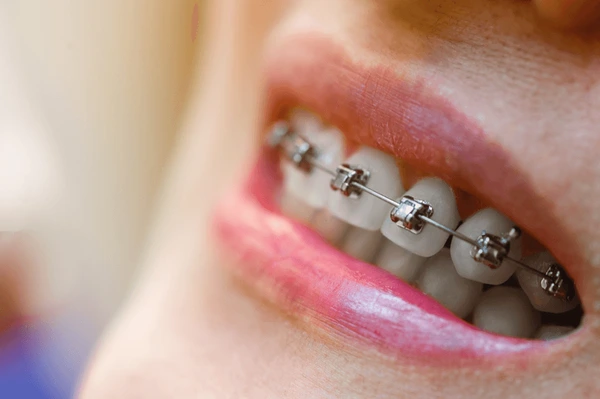
Self-ligating braces function similarly to traditional braces by applying gentle, continuous pressure to move teeth into the desired position. However, instead of rubber bands (ligatures), they use a built-in sliding clip mechanism to hold the archwire.
Active Self-Ligating Braces – Use a spring-loaded clip that applies constant pressure on the archwire, encouraging faster movement.
Passive Self-Ligating Braces – Use a sliding clip without added pressure, allowing smoother tooth movement with less friction.
Metal Self-Ligating Braces
Ceramic Self-Ligating Braces


✔ Brackets: Made of metal or ceramic, featuring an in-built sliding clip.
✔ Archwire: A thin metal wire runs through the brackets, guiding tooth movement.
✔ Sliding Clip Mechanism: Holds the archwire in place, eliminating the need for rubber bands.
Self-ligating braces are suitable for:
✔ Patients with mild to severe misalignment
✔ Those with crowding, spacing, overbites, underbites, or crossbites
✔ Individuals who want fewer orthodontic visits and faster treatment
✔ People seeking a more comfortable alternative to traditional braces
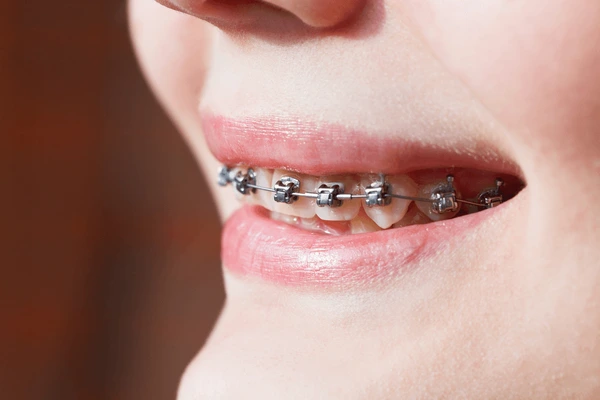
✔ Faster Treatment Time – Less friction and efficient movement reduce overall treatment time.
✔ More Comfortable – Reduced pressure and no elastic bands result in less pain.
✔ Fewer Orthodontist Visits – Adjustments are needed less frequently (every 6–8 weeks instead of 4–6 weeks).
✔ Easier to Clean – No rubber bands means less food accumulation and easier brushing.
✔ Available in Metal and Ceramic Options – Offers an aesthetic alternative for those who prefer less noticeable braces.
❌ More Expensive Than Traditional Braces – Costs NPR 80,000 – NPR 120,000 due to advanced technology.
❌ Not Completely Invisible – Although less bulky, they are still visible like traditional braces.
❌ May Not Be Suitable for Severe Cases – Some extremely complex cases may still require traditional braces or additional appliances.
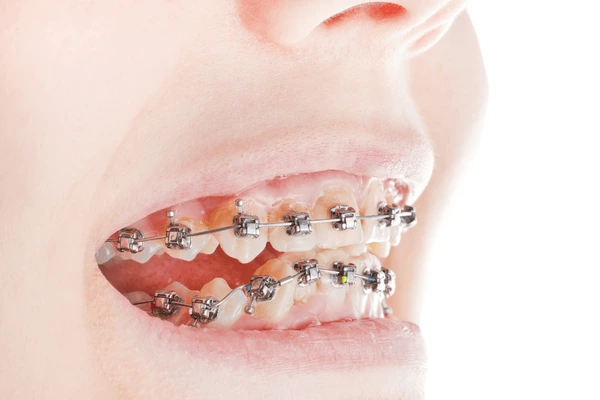

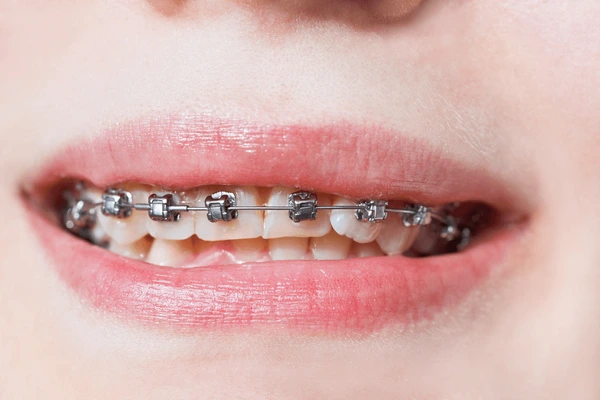
Self-ligating braces are more expensive than traditional braces but less expensive than lingual braces or clear aligners.
📌 Average Cost: NPR 80,000 – NPR 120,000
📌 Initial Deposit: NPR 15,000 – NPR 20,000 (during bonding of braces)
📌 Monthly Installments: NPR 4,000 – NPR 5,000 per visit until the total cost is covered
📌 X-Rays Required: OPG and Lateral Cephalogram (NPR 1,000 each, done externally)
The treatment duration varies depending on the complexity of the case:
📅 Mild cases: 12 – 18 months
📅 Moderate cases: 1.5 – 2 years
📅 Severe cases: 2 – 2.5 years
📌 Self-ligating braces may reduce treatment time by 3–6 months compared to traditional braces.
1️⃣ Consultation & X-Rays – The orthodontist examines your teeth and takes X-rays to create a treatment plan.
2️⃣ Teeth Cleaning & Preparation – Your teeth are cleaned before applying brackets.
3️⃣ Brackets Bonding – Self-ligating brackets are glued to the teeth with dental adhesive.
4️⃣ Archwire Placement – A metal wire is inserted through the self-ligating clips.
5️⃣ Final Adjustments – The orthodontist checks everything before you leave.
📌 Total Time: 1.5 to 2 hours

📌 Mild Discomfort: The first few days may include slight soreness, which fades with time.
📌 Speech Adjustments: Some patients may take a few days to adjust to speaking with braces.
📌 Dietary Changes: Avoid hard and sticky foods to prevent damage to brackets.
📌 Easier Cleaning: No rubber bands mean less food trapping, making it easier to maintain oral hygiene.
🦷 Brush After Every Meal – Use a soft-bristled toothbrush or an electric toothbrush.
🦷 Floss Daily – Use a floss threader or a water flosser to clean between brackets.
🦷 Use Mouthwash – Helps prevent plaque buildup around brackets.
❌ Hard foods (nuts, popcorn, ice, hard candies) – Can break brackets.
❌ Sticky foods (chewing gum, caramel, toffee) – Can get stuck in brackets.
❌ Sugary foods (soft drinks, sweets) – Increases the risk of cavities.
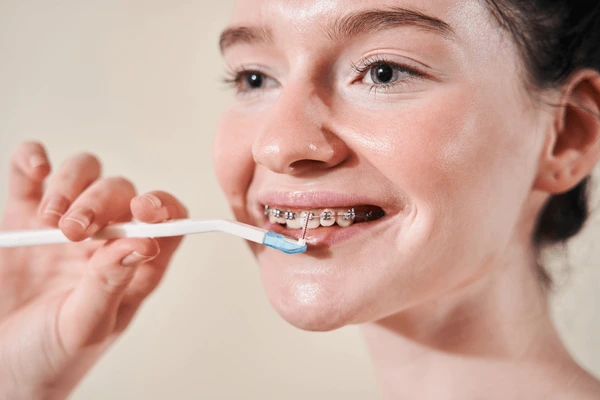
Patients must visit their orthodontist every 6 to 8 weeks for adjustments. During these appointments:
✔ The orthodontist adjusts the archwire to continue tooth movement.
✔ Broken brackets or wires are repaired.
✔ Oral hygiene is checked.
📌 Fewer visits compared to traditional braces.
Once treatment is complete, the orthodontist will:
Remove brackets and wires (a painless process).
Clean off remaining adhesive from your teeth.
Take impressions for retainers to maintain your new smile.
📌 Time Taken: 30 – 60 minutes

Retainers are essential after treatment to keep your teeth in place.
📅 Wear Schedule:
Full-time for 6 months
Night-time for several years
📌 Types of Retainers:
✔ Fixed Retainers (Permanent) – A thin wire bonded behind your teeth.
✔ Removable Retainers (Clear or Hawley) – Worn at night to maintain alignment.
f you’re looking for a more comfortable and efficient alternative to traditional braces, self-ligating braces are an excellent option. They reduce friction, speed up treatment, and require fewer orthodontic visits, making them ideal for busy individuals.
✅ Teens & Adults who want a faster and more comfortable treatment
✅ People with mild to severe misalignment
✅ Patients who want fewer orthodontic visits
✅ Individuals looking for an easier-to-clean braces option
With advanced technology and efficient tooth movement, self-ligating braces provide a convenient and effective orthodontic solution for achieving a perfect smile! 😁✨
{{ is_error_msg }}
Waiting Time {{ service_details.bookingpress_service_duration_val }} {{ service_details.bookingpress_service_duration_label }}
Price {{ service_details.bookingpress_service_price }}
{{ is_error_msg }}
{{ is_error_msg }}
{{ is_error_msg }}
Your appointment booking summary
Pay Locally
PayPal